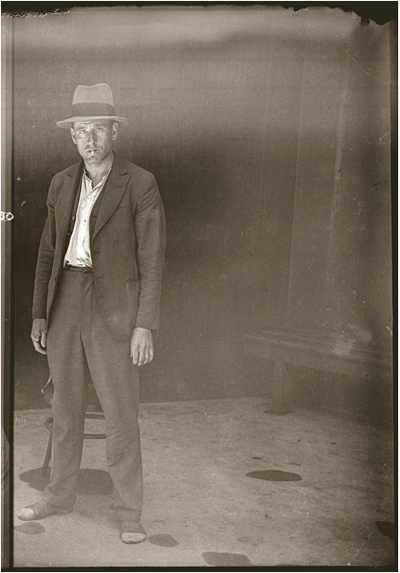
Paleokostas being taken to prison. Captions by Teacher Dude’s BBQ.
Here at Coilhouse, we’ve covered all manner of crackpot visionaries: mathematicians, authors, filmmakers, taxidermists, conspiracy theorists, culture jammers and other cognitive dissidents. But you know what we’ve been missing in this category? Straight-up hardcore CRIME. And thus we present the tale of Vassilis Paleokostas, a well-intentioned Greek bandit who kidnapped politely, gifted ransom generously, and accomplished the miraculous double rainbow of prison breakouts: two escapes from Greece’s toughest penitentiary, spaced three years apart, by helicopter both times. Take the highly entertaining Badass of the Week write-up excerpted below with a grain of salt, but note that most of the facts below have been confirmed by multiple news sites:
Vassilis’ story starts back in the early 90s, when he went on an insane crime spree of delicious armed robbery, blackmail, extortion, and kidnapping. Basically, his modus operandi was to kidnap a super-rich bastard, hold him for a ridiculous ransom, and then sell him back to his stupid family in exchange for giant piles of cold, hard cash. Then, he’d take that bling, keep a small percentage of it for himself, and distribute the rest of his newly-acquired wealth to impoverished farmers of the tiny rural province in which he grew up. The dude quickly made a name for himself as the Robin Hood of Greece, and was beloved by fans of badassery, the people of the lower classes, and pretty much anybody else he wasn’t in the process of robbing or extorting for money. Shit, even the fucking people he kidnapped came out later and said that he was very polite and respectful to them while they were in captivity, and that it was pretty much the most pleasant kidnapping they’d ever experienced… he also made a vow never to harm a member of the public in his criminal escapades. He’s been true to his word.
Paleokostas was eventually caught, arrested, and hauled off to a “federal pound-me-in-the-ass penitentiary known as Korydallos Prison,” one of the harshest prisons in Greece: “a mix between Andersonville, Oz, and that stupid plastic box they keep Magneto inside in the X-Men movies.” No one who went inside Korydallos ever came out, except for Vassilis Paleokostas:
In June 2006, Paleokostas’ older brother (another pathological criminal who is now serving jail time on 16 counts of armed robbery) commandeered a helicopter, and landed it right in the middle of the fucking exercise yard of the prison in broad daylight. The armed guards at Korydallos, not expecting to be subjected to such an unbelievable display of gigantic steel-plated testicles, assumed that this chopper belonged to the warden or the Chief of Prisons or something, and instead of investigating it they all decided to make sure their shoes were appropriately spit-shined so as not to incur a citation from their wrathful bosses. Vassilis (who had orchestrated the entire operation from the beginning) … simply walked up to the helicopter, hopped inside, and lifted off. By the time the guards got their heads out of their asses and started firing their guns at the bird, it was already too late. Paleokostas had escaped.
After his escape, a nationwide manhunt was declared. Paleokostas evaded the law for two and a half years, hiding in the mountains and orchestrating another high-profile kidnapping, “snatching a powerful jackass CEO industrialist, ransoming him for a huge wad of cash, and once again distributing the loot to local farmers and families.” He was then caught by the Greek police, and once again sent to Korydallos prison, where he awaited trial. Except that the second day that he was at Korydallos…
ANOTHER FUCKING HELICOPTER showed up in the skies. It flew over a large tower of the prison, lowered a long rope ladder, and Vassilis Paleokostas and Alket Rizai climbed up into the chopper. As the helicopter flew off into the sunset, the prisoners of Korydallos cheered. Greek police opened fire on the chopper as it flew off, but a woman returned fire with an AK-47 assault rifle… the police eventually tracked down the helicopter, and found that it had ditched on the side of the road outside Athens with a bullet hole in the gas tank. According to the pilot, Paleokostas and his associates left the chopper and drove off on totally sweet motorcycles to an undisclosed location. They also popped some totally bitchin’ wheelies while doing so.
After this incident, the Greek authorities fired the country’s Chief of Prisons, the Inspector-General of Prisons, the warden of Korydallos, and three prison guards. Paleokostas remains at large.
[via raindrift]










